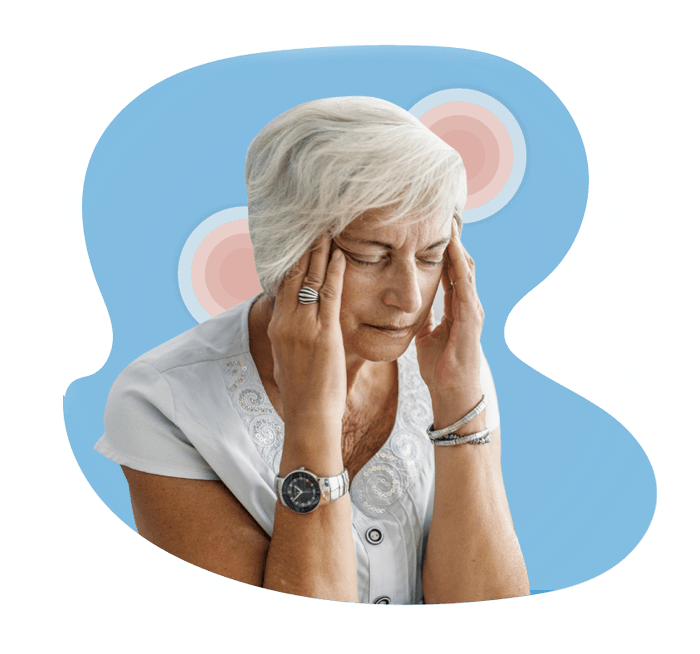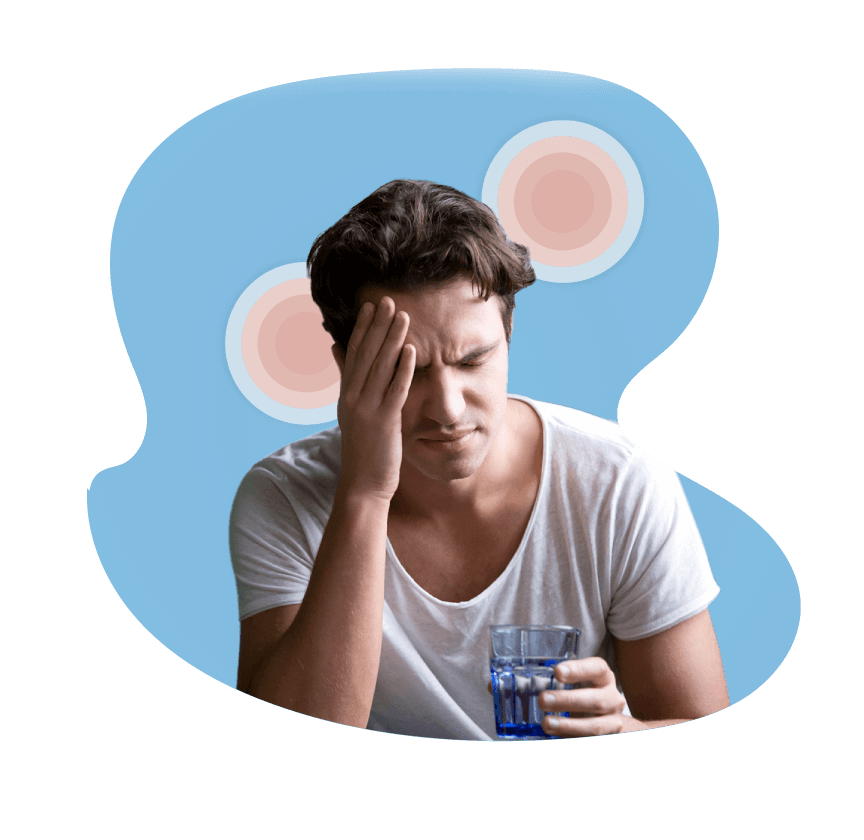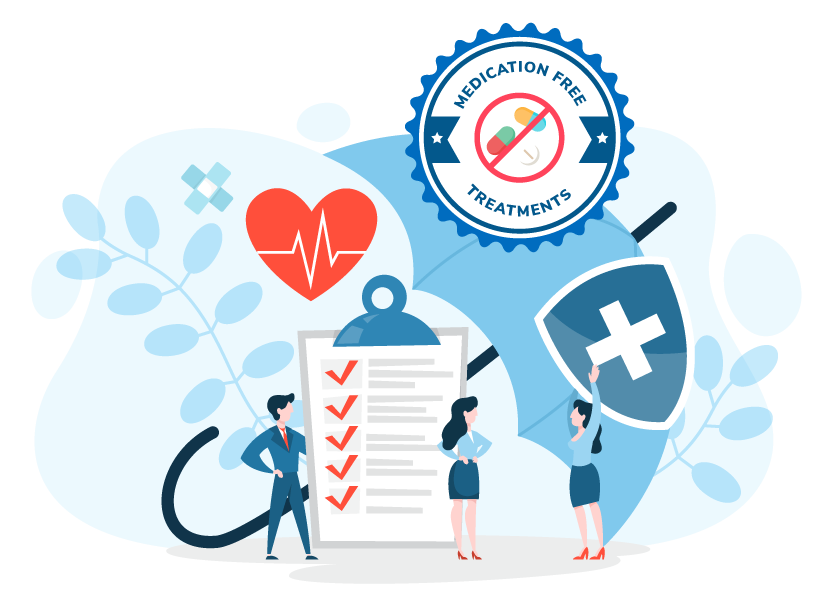Chronic Tension Type Headache
Chronic tension type headache is classified as headache pain being bilaterally on both sides of the head, where the pain is usually symmetrical and equal from left to right.
Compared to migraines, chronic tension type headache causes mild to moderate pain, and feels more of a tightening and pressing sensation rather than a pulsating pain.
New Daily Persistent Headache
New daily persistent headaches occur in those with no history of headaches and come on abruptly and suddenly. The pain is constant in nature within the first three days from the start of the first headache.
New daily persistent headaches normally present with pain bilaterally to both sides of the head with a mild to moderate pain intensity, similar to chronic daily tension headache. The pain is a pressing type pain with a tightening sensation as opposed to pulsating pain.
Chronic Migraine Headache
Chronic migraine is categorised as those who suffer from a history of episodic migraines. Usually, their migraines have worsened over time and have now become chronic in nature due to being left untreated.
The pain can switch from left to right during the same attack or during but is usually unilaterally on one side of the head. The pain is usually felt as a pulsating and throbbing sensation and is usually moderate to severe in severity.
Hemicrania Continua
Hemicrania continua is a more severe headache that affects locked on one side of the head and does not shift from side to side.
This headache is persistent with no pain-free periods and is usually moderate in nature. However, tends to have severe spikes of pain throughout the day.
Hemicrania continua is also associated with autonomic features such as a watery eye, redness in the eye, swollen or droopy eyelids, blocked or runny nose.
Symptoms such as sensitivity to sound, smell or light, nausea and vomiting can also be present.
Differentiating Chronic Daily Headaches from Other Headache Types
Accurately distinguishing chronic daily headaches from other headache disorders is essential, as similar symptoms may have very different underlying causes and management strategies
For example, cluster headaches – part of a group known as trigeminal autonomic cephalalgias – involve intense, one-sided pain around the eye or temple and occur in cyclical patterns known as cluster periods. Although they can be a chronic headache type, cluster headaches are classified differently and require specific management strategies.
Secondary headaches – caused by underlying conditions like sinus infections, neck injuries, or medication overuse – can also mimic chronic daily headache symptoms. As treatment focuses on addressing the root cause rather than managing symptoms alone, accurately identifying the type of headache is crucial to developing an effective treatment plan tailored to your condition.
Management of Chronic Daily Headaches
Managing chronic daily headaches requires a comprehensive approach that goes beyond simply treating the pain. At Sydney Headache and Migraine Clinic™, we focus on identifying underlying causes and equipping patients with tools to reduce their headache frequency and regain control over their lives.
Headache Diary
One valuable strategy is the use of a headache diary. By tracking when headaches occur, along with potential triggers such as posture, sleep patterns, or stress levels, patients and clinicians gain clearer insights into individual headache patterns. This helps guide the most effective treatment plan tailored to each case.
Cognitive Behavioural Therapy
For some patients, behavioural therapies can complement physical treatment. Cognitive Behavioural Therapy (CBT), for example, may help reduce the emotional and psychological impact of frequent headaches and chronic pain by teaching coping strategies and addressing stress-related triggers.
Risk Factors of Medication Overuse
It is also important to understand the potential risks associated with over-reliance on acute treatment or pain medications. Regular use of these medications may lead to medication overuse headaches, where the very medications intended for relief end up worsening headache symptoms over time. In such cases, patients may also experience withdrawal symptoms when attempting to reduce medication use.
Effective Management Strategies
The International Headache Society classifies chronic daily headaches as part of broader chronic headache disorders, including chronic migraine headaches and chronic tension headaches. Effective management of these conditions focuses on treating the root cause, rather than relying solely on temporary relief from medications.







